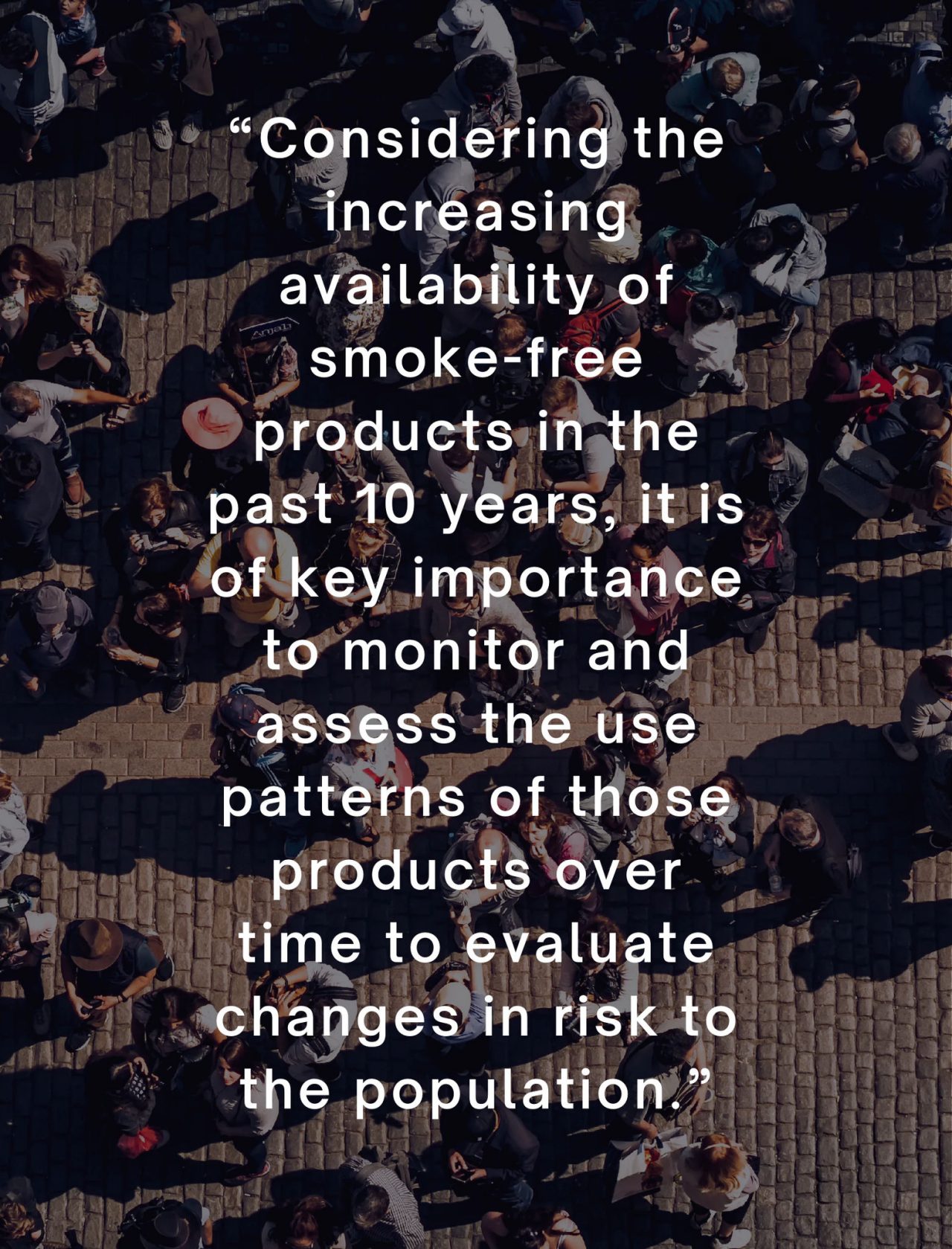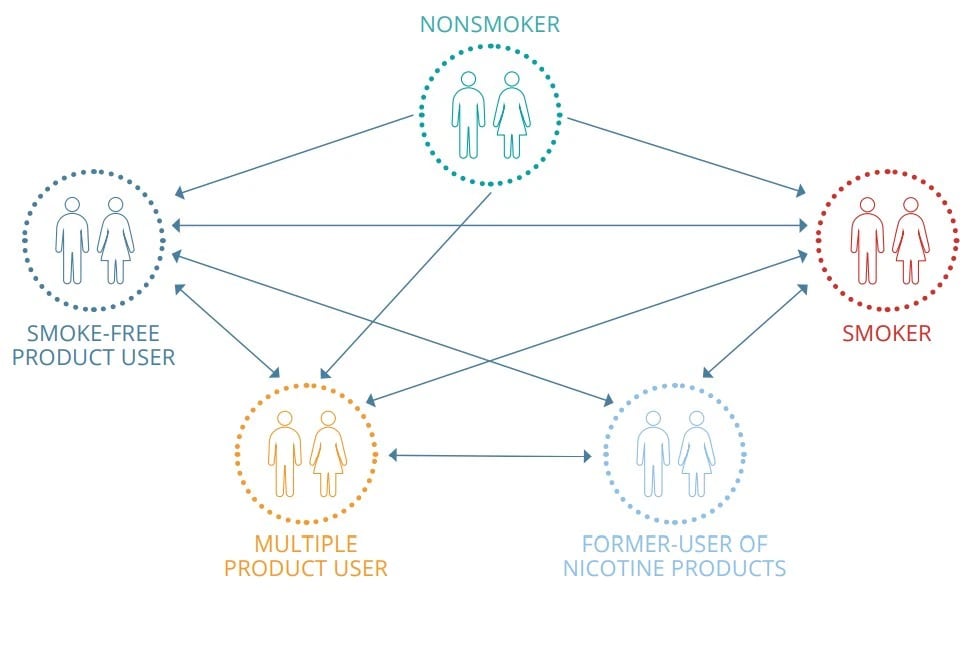A closer look at the measurement of product use patterns
Reducing risk of harm
The best way for adult smokers to reduce their risks associated with smoking is to quit tobacco and nicotine altogether. However, evidence has shown that many smokers don’t quit.
For these adult smokers who would otherwise continue to smoke cigarettes, switching to a scientifically substantiated smoke-free alternative could reduce their risk of smoking-related harm, such as lung cancer, chronic obstructive pulmonary disease (COPD), and cardiovascular diseases, compared with continued smoking. These products could, indeed, complement existing tobacco control efforts and be part of an overall harm reduction strategy to benefit public health.
In recent years, an increasing number of smokers have switched from cigarettes to smoke-free alternatives such as e-cigarettes, heated tobacco products, or oral tobacco products to reduce the risk of harm to their health compared with continued smoking. Many have stopped smoking cigarettes to completely switch to one of these smoke-free products, while some are using those smoke-free products in combination with other TNPs, including cigarettes. Measuring the extent to which those smoke-free products are used exclusively or together with one or more other products is an important factor to determine the impact that those smoke-free products may have on the individual and on the population as a whole.
Considering the increasing availability of smoke-free products in the past 10 years, it is of key importance to monitor and assess the use patterns of those products over time to evaluate changes in risk to the population. To do that, it is necessary to set standards for how to categorize product use patterns. For example, does smoking a cigarette once per month make the person a smoker? If so, in this scenario shouldn’t the definition be the same for smoke-free products in order to properly compare them?
Why does measuring product use patterns matter?

Product use patterns are important to measure as they impact public health. For instance, for adult smokers who would otherwise continue to smoke, replacing their cigarettes with scientifically substantiated smoke-free alternatives can be a way to reduce the risk of harm to their health compared with continued smoking. This is because these products, while not risk free and still containing nicotine, which is addictive, expose users to fewer and lower levels of toxicants compared with cigarettes.
In short, to understand the potential health effects of these products on public health, we must understand how they are used. As a result, we need to answer several questions about use patterns, such as:
- Are adult smokers who switch to these products actually stopping smoking cigarettes?
- Are they continuing to smoke, perhaps while at the same time using additional tobacco products?
- Which types of nicotine-containing products are they using and how are they using them, both in terms of frequency and intensity of use?
Here are a couple of examples showing why answers to these questions are important. If an adult who smokes 20 cigarettes a day starts using one of these smoke-free products, such as an e-cigarette, this person may completely switch to this e-cigarette. Switching completely would reduce their exposure to harmful and potentially harmful constituents (HPHCs) and, therefore, their smoking-related health risks. But if instead that adult smoker replaces half of their cigarette consumption with e-cigarettes, in other words they are using e-cigarettes but still smoke 10 cigarettes a day, they would not achieve the full benefits of switching.
To ensure that smokers can make informed decisions, they should be aware that smoke-free alternatives exist and have access to accurate and truthful information about the benefits, but also the risks, of these products. They should also be reminded that the absolute best choice they can make is to quit tobacco and nicotine use altogether.
How to overcome the challenges of measuring product use patterns?
Behavior change is a complex process and for the most part these changes do not happen overnight. Therefore, measuring product use prevalence and use patterns needs to be done in a repeated and consistent manner to understand changes and trends over time. Such evidence will allow scientists and regulators to progressively assess the potential positive impact that scientifically substantiated smoke-free products may have on the individual and the population as a whole.

Example of tobacco product use patterns.
To reach any meaningful conclusions about the impact of new TNPs on public health, it is important that those measures provide accurate, consistent, and reliable data. Therefore, scientists, regulators and the industry should work together to establish commonly agreed standards and definitions to measure product use patterns and promote comparability across different studies. Once those practices are in place, it becomes possible to combine use prevalence and use pattern data with other information from public health impact modeling, real-world evidence, and epidemiological studies. Together, these important assessment tools can better clarify the impact of smoke-free products on population health.

Read the Scientific Update magazine
The Scientific Update magazine is focused on PMI's research and development efforts, milestone studies, industry regulations, and more. View the latest issue, or read the articles online.


